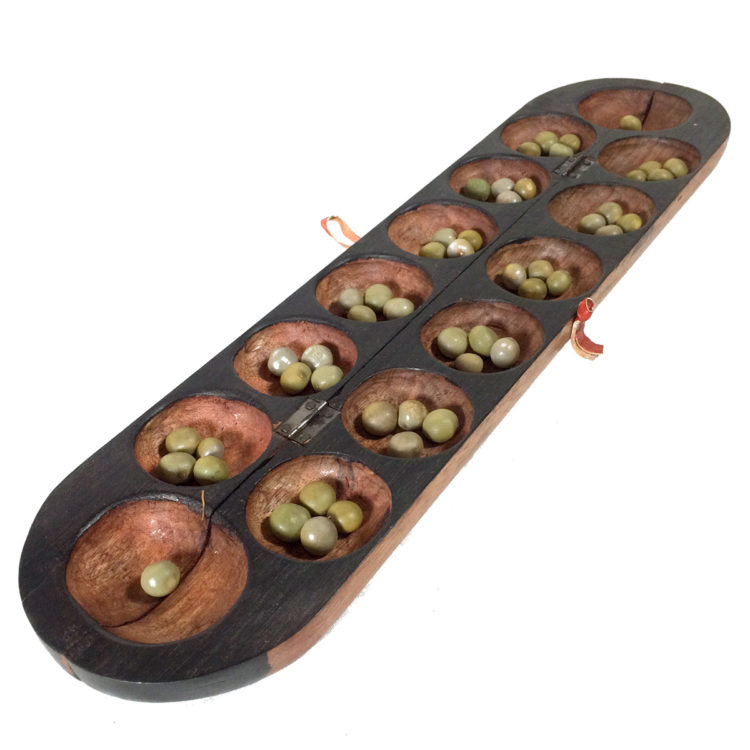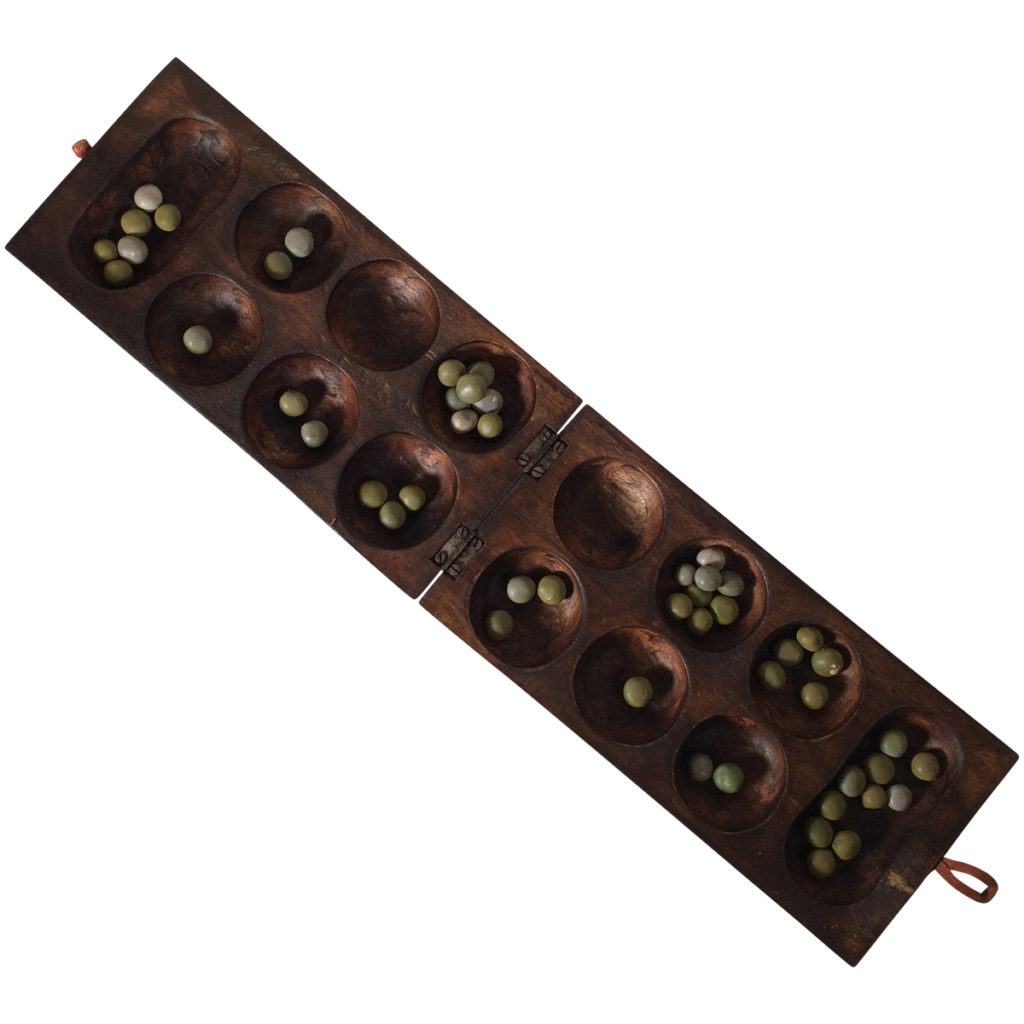Mancala is a two-player “count-and-capture” game that originated in Africa. It is easy to learn and yet extremely engaging for people of all ages. Players take turns to move stones around the board with the aim of collecting the most stones in their Mancala. Planning ahead in this game is essential. Players need to visualize the future possibilities and test multiple strategies to discover the most effective moves. This game can be improvised using half an egg carton, stones and two bowls as the Mancalas.
How to Play
Pieces:
- Mancala Board
- DIY: Egg Carton and two small containers.
- 48 stones/beads/seeds
Setting up:
To begin you place the board between both players and the largest pocket to the right of each player is their “Mancala”. Place four stones in each of the 12 small pockets.
Playing:
One player begins by taking all the stones from one pocket and placing one in each pocket to the right in a counter-clockwise direction. If you pass your Mancala you place a stone inside (as if it were a smaller pocket), however, if you pass your opponent’s Mancala you skip over it without placing a stone.
- If you place the last stone in a pit on your side of the board that contains other stones, you go again.
- If the last stone is placed in your Mancala, you go again.
The game ends when one side of the board is completely without stones.
Scoring:
The player with the most stones in their mancala at the end of the game wins.
Teaching Resources
There are many versions of Mancala and it can be an engaging experience for the students to try to figure out what the rules are in this online version of Mancala.
Mathematical Processes
Connections [CN]: Mancala is an excellent way to introduce your students to ethnomathematics (the study of the relationship between mathematics and culture). Although it is debated where Mancala originated from, it was brought to North America by African slaves and was a game commonly played in Ghana. There are hundreds of variations of the game (created by simply changing the number of rows, pits or seeds). This game provides an excellent opportunity for your students to develop awareness and appreciation of a new culture.
Communication [C]: Mancala offers students an opportunity to listen to and discuss mathematical ideas. Students may begin by speaking using their own vocabulary and the teacher or their peers can guide them towards the formal language and symbols of mathematics which represent their ideas (e.g. placing more/less stones is addition/subtraction). Students are able to communicate about the concrete mathematical ideas happening within the game board, and also about the mathematical mental representations of potential moves. Students may also need to defend their moves by explaining their reasoning to an opponent.
Visualizing [V]: Mancala helps students develop their visualization skills because it provides an excellent concrete example of addition, subtraction, counting, and subitizing (the number of stones within a pit). Mancala also has a strong connection to remainders; as students divide their stones across the game board they can calculate the remainder to predict the placement of their last stone. When students can perceive these concrete ideas and transform them into mental representations they develop a deeper, more flexible understanding. A key element in this game is visualizing your potential moves which requires students to know how many stones would be in various pots if they distributed the stones in a pot of their choice, in order to do so students need to develop their spatial sense and reasoning.
Reasoning [R]: During this game, students will gain experience analyzing an unknown mathematical problem. They will develop confidence as they discover effective playing strategies based on the patterns they see. Once they understand which strategies work best and why they will be able to logically explain their reasoning and thereby defend their conclusions. Often students use the strategy of striving to take as many consecutive turns as possible; when using this strategy the best opening move is distributing the stones from the pit which results in the last stone landing in their Mancala pocket, and thereby another turn.
Problem Solving [PS]: Mancala poses a problem for students to solve and, although each game is different depending on the strategies used by both players, students will gain experience and knowledge as they experiment with different strategies. As they observe, listen and discuss multiple methods they will gain the confidence to take risks and try new ideas. To give a couple examples of strategies in Mancala, students may approach the problem by trying to gain stones by utilizing the empty pots or they may focus more on trying to gain another turn and thereby another chance to move stones into their mancala.
Mental Mathematics and Estimation [ME]: Mancala offers an excellent opportunity for students to practice modular arithmetic. By mentally performing division of the number of stones they are distributing by the number of pits and their mancala (13), students use the remainder to determine exactly where their stone will land at the end of the turn relative to the starting pit. One example would be: if a student has 2 or 15 or 28 stones in a pit, the remainder would be 2 and would mean the last stone lands two pits beyond their starting place.




1 thoughts on “Mancala”